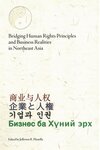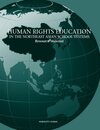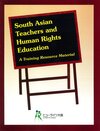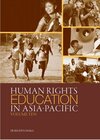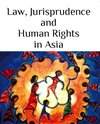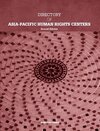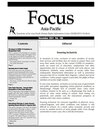The Asia-Pacific Human Rights Information Center (HURIGHTS OSAKA) celebrates the publication of the 100th issue of its newsletter.
The first issue of the newsletter came out in February 1995. It featured the proceedings of the formal inauguration of HURIGHTS OSAKA on 7 December 1994. The newsletter was named HURIGHTS OSAKA Newsletter.
Speeches made during the inauguration ceremonies stressed issues in the Asia-Pacific region as much as challenges that HURIGHTS OSAKA had to deal with in fulfilling its role in the region. Professor Kinhide Mushakoji, then Chairperson of the Board of HURIGHTS OSAKA, stressed the universality of human rights “not because of the formal legal style they are written in, but because the idea … of human rights itself is universal.” He emphasized the need to take into serious account the histories and traditions of the peoples in the region in promoting the universality of human rights. Mr Thomas McCarthy, Senior Adviser for United Nations High Commissioner for Human Rights, stressed the importance of regional and subregional mechanisms that would facilitate “broader regional cooperation and information exchange” within the region as well as with the United Nations. He cited the role of the Association of Southeast Asian Nations (ASEAN) and the South Asian Association for Regional Cooperation (SAARC) in this regard. Finally, Ms Aurora de Dios, Associate Professor in Miriam College in the Philippines, proposed that HURIGHTS OSAKA establish a collection of materials on the “social, economic and political condition of Asian peoples.” She also suggested the collection of human rights education materials. Mr Jose Ayala-Lasso, the first United Nations High Commissioner for Human Rights, sent a message that stressed the importance of human rights education and that HURIGHTS OSAKA “will undoubtedly have an important impact on the promotion and protection of human rights nationally, regionally and internationally.”
These ideas would subsequently be reflected in the contents of the newsletter in the years to come.
Widening Reach and Issues
The name of the newsletter was changed to FOCUS Asia-Pacific in its third issue (March 1996). The new name indicates the character of the publication - a medium that examines Asia-Pacific issues, brings out the different voices of peoples in the region on human rights concerns, and promote the international human rights standards. The name is also meant to emphasize information exchange among peoples and institutions within the wide Asia-Pacific region.
Printed copies of the FOCUS Asia-Pacific newsletter are sent mainly to non-governmental organizations, human rights institutions, government offices/libraries and human rights centers in Asia and the Pacific.
The newsletter strives to cover issues from different subregions of Asia (West, Central Northeast, Southeast and South Asia) and the Pacific.
Aside from issues, the articles cover almost the whole range of human rights (civil, cultural, economic, political and social rights), human rights practice (local, national and regional work) and human rights institutions (non-governmental organizations, museums, human rights centers and national/subregional human rights institutions).
The newsletter features articles grouped under specific themes. The articles from Jordan, Kyrgyzstan and Fiji on local community human rights work in the December 2019 issue of the newsletter illustrate this approach.1 These articles provide a variety of experiences on local community human rights work in West and Central Asia and the Pacific.
There are articles that highlight the histories of communities. This is the case of articles on displaced communities such as the Urdu-speaking people in Bangladesh, the Vietnamese community in Cambodia, Indonesians in the Philippines and Vietnamese refugees in Japan.
Series of articles on particular topics such as the cultures in Asia and the human rights concept, human rights education, Asia-Pacific inter-governmental human rights workshops, national and regional human rights mechanisms, access to justice, the International Criminal Court, human rights cities and business and human rights are featured.
There are several articles about refugees and asylum seekers, indigenous peoples, children, persons with disabilities, women, minorities (social, cultural, religious and sexual), trafficking in person, migration, discrimination and minorities, health and human rights, and globalization.
Common-themed articles from different subregions or networks are published together in one or more issues of the newsletter to stress diversity of perspectives and richness of experiences in Asia-Pacific. This approach also facilitates the dissemination of articles/information outside the subregion or organizational network where they come from.
Citations
Random online search of materials that cite articles of the newsletter provides information on the type of literature involved as well as issues and rights being discussed.
Articles have been cited in different types of print and online literature including doctoral and masteral theses, books, journals, reports, training manuals, websites (databases, libraries) and also blogs. There are university syllabuses that list articles as reading materials.
The cited articles discuss different human rights and human rights-related issues. Many books and journals cite articles on human rights mechanisms including national human rights institutions (in Thailand, Malaysia, Timor Leste, Korea, and Fiji) and a subregional human rights mechanism (ASEAN Inter-governmental Commission on Human Rights). Some cite articles on the lobby for the establishment of a national human rights institution in Japan. Books and journals also cite articles on indigenous peoples, trafficking in persons, culture and human rights, child rights, human rights education, violence against women, domestic violence, Rome Statute/International Criminal Court, and business and human rights.
On the other hand, reports and training manuals (produced by United Nations agencies, non-governmental organizations and other institutions) cite articles on economic, social and cultural rights (housing rights, rights of farmers, rights of migrant workers, right to health), development and human rights, access to justice/legal assistance along with those on minorities and specific sectors (women, children, persons with disabilities, urban poor, migrant workers, refugees, indigenous peoples and sexual minorities).
Many blogs cite articles on minorities (non-nationals, and religious, social groups), indigenous peoples, children, trafficking and human rights mechanisms (national and subregional). A few blogs cite articles on human rights and culture, housing rights and sexual minorities.
Contributors
FOCUS Asia-Pacific newsletter thrives on widely disseminating information on the efforts and experiences of individuals and institutions toward achievement of human rights in Asia and the Pacific. Most of them established their first contact with HURIGHTS OSAKA because of our request for articles. Some of them have been recommended by individuals and institutions known to HURIGHTS OSAKA.
Ultimate Goal
One of the aims of HURIGHTS OSAKA is to contribute to the promotion of human rights in the Asia-Pacific region. This is mainly done through its information/material gathering and dissemination system. The publications in English,2 its English website and occasional activities such as research projects and workshops constitute the dissemination system.
The FOCUS Asia-Pacific newsletter plays a big role in achieving this aim. It has shown its capacity to cover human rights issues from the subregions of Asia and the Pacific, to engage individuals and institutions from many countries in preparing articles, and to facilitate the “crossing of borders” that network and subregional peculiarities have somehow hindered.
The different contexts of Asia and the Pacific define the articles that illustrate how the international human rights standards are protected, promoted and realized at the local and national levels.
Twenty-five years after the first issue came out, the FOCUS Asia-Pacific newsletter continues to promote human rights in Asia and the Pacific.
Jefferson R. Plantilla is the Chief Researcher of HURIGHTS OSAKA.
For further information, please contact HURIGHTS OSAKA.
Endnotes
1 See this issue of FOCUS Asia-Pacific, March 2020, Volume 99 in www.hurights.or.jp/archives/focus/.
2 The list of English publications is available at the website of HURIGHTS OSAKA.
3 The website of HURIGHTS OSAKA organizes the articles of the newsletter in terms of region, country, issue, sector and special concerns.
